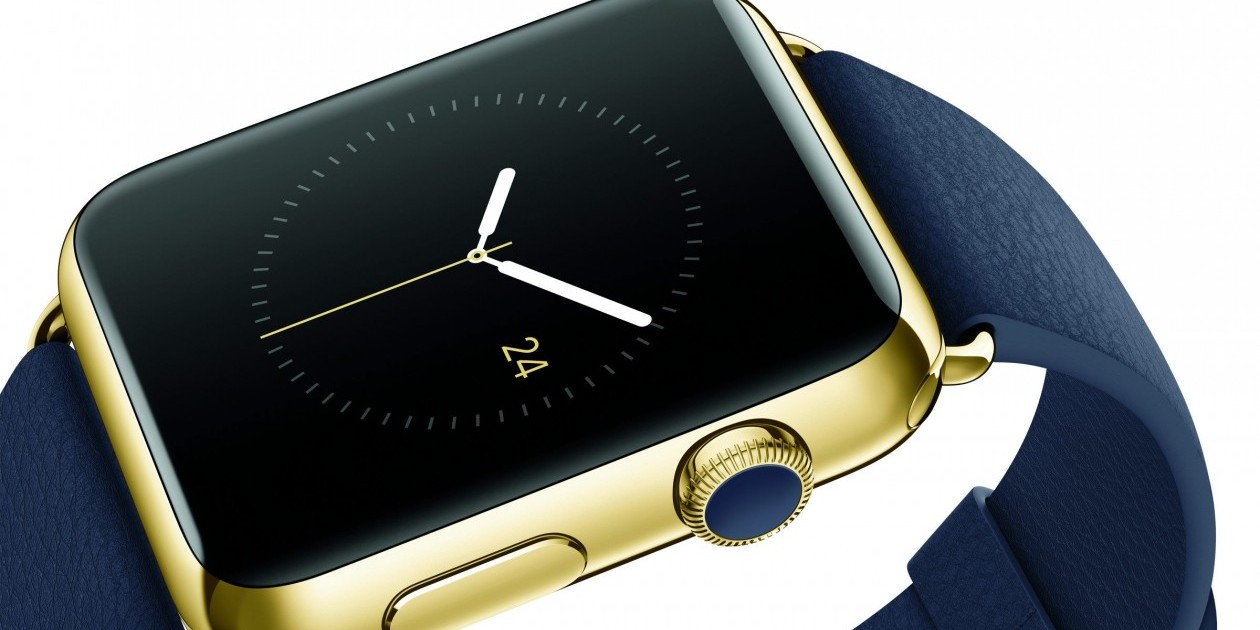 Apple’s long-awaited entry into the wearable tech space finally has a date and time, with the Apple Watch – the tech giant’s first entirely new product since the iPad in 2010 – set to arrive in stores on April 24.
Apple’s long-awaited entry into the wearable tech space finally has a date and time, with the Apple Watch – the tech giant’s first entirely new product since the iPad in 2010 – set to arrive in stores on April 24.
The Apple Watch comes in three different versions, each featuring two different sized screens, 38mm and 42mm: The basic Apple Watch Sport is priced at $449 and $519; the mid-range stainless-steel Apple Watch between $649 and $1,459; and a deluxe Apple Watch Edition, available in either rose or yellow 18-karat gold, starting at $13,000.
With a stated battery life of 18 hours, the Apple Watch is designed for interactions lasting an average of 10 seconds, such as responding to a text message or checking e-mail. Presumably, owners will also use it to check the time.
Here though, Apple is in the rare position of entering a tech category as a runner-up, with several Android-based smartwatches – including the Pebble and the Samsung Gear – already on the market.
Writing on TheVerge.com, authors Adi Robertson, Josh Dzieza and Lizzie Plaugic called it one of the tech giant’s “riskiest ventures” in years. “[The Apple Watch is] going to play a big role in either making smartwatches the new smartphones or sending them back to the panels of Dick Tracy,” they wrote.
While smartwatches haven’t yet achieved widespread adoption, some pundits believe the Apple Watch – which was unveiled by Apple during a Monday keynote called “Spring Forward” – could provide the category with a much-needed boost.
A 2014 report from BusinessInsider.com’s research division Business Intelligence projected global smartwatch sales of $91.6 million by 2018. In a research note issued last year, Morgan Stanley said Apple could sell 30 million Apple Watch units this year.
Interestingly, a report on Cnet.com said the Apple Watch might find a “convenient niche” among people who own large screen smartphones such as the iPhone 6 or the iPhone 6 Plus.
The report suggested the Apple Watch could act as a “middleman” for those people, allowing them to simply glance at their wrist for a notification instead of having to pull a massive phone out of a pocket or purse.
But, while Apple has the brand recognition and a loyal customer base, reports have said there are also several factors working against it in its attempt to crack the smartwatch market, most notably conveying to consumers why they need this device. That, writes Tim Bradshaw on FT.com, has been a collective failure of all players in the wearable tech category.
Not surprisingly, when it comes to Apple, experts also said price could drive away potential customers. “Apple customers have proven that they are prepared to pay a premium for its products over the years,” writes Bradshaw. “But some people believe the price – running into several hundred dollars for the steel version and several thousand for the gold – will be off-puttingly high.”
Ultimately, only time will tell whether Apple’s play on the smartwatch will yield dividends.











